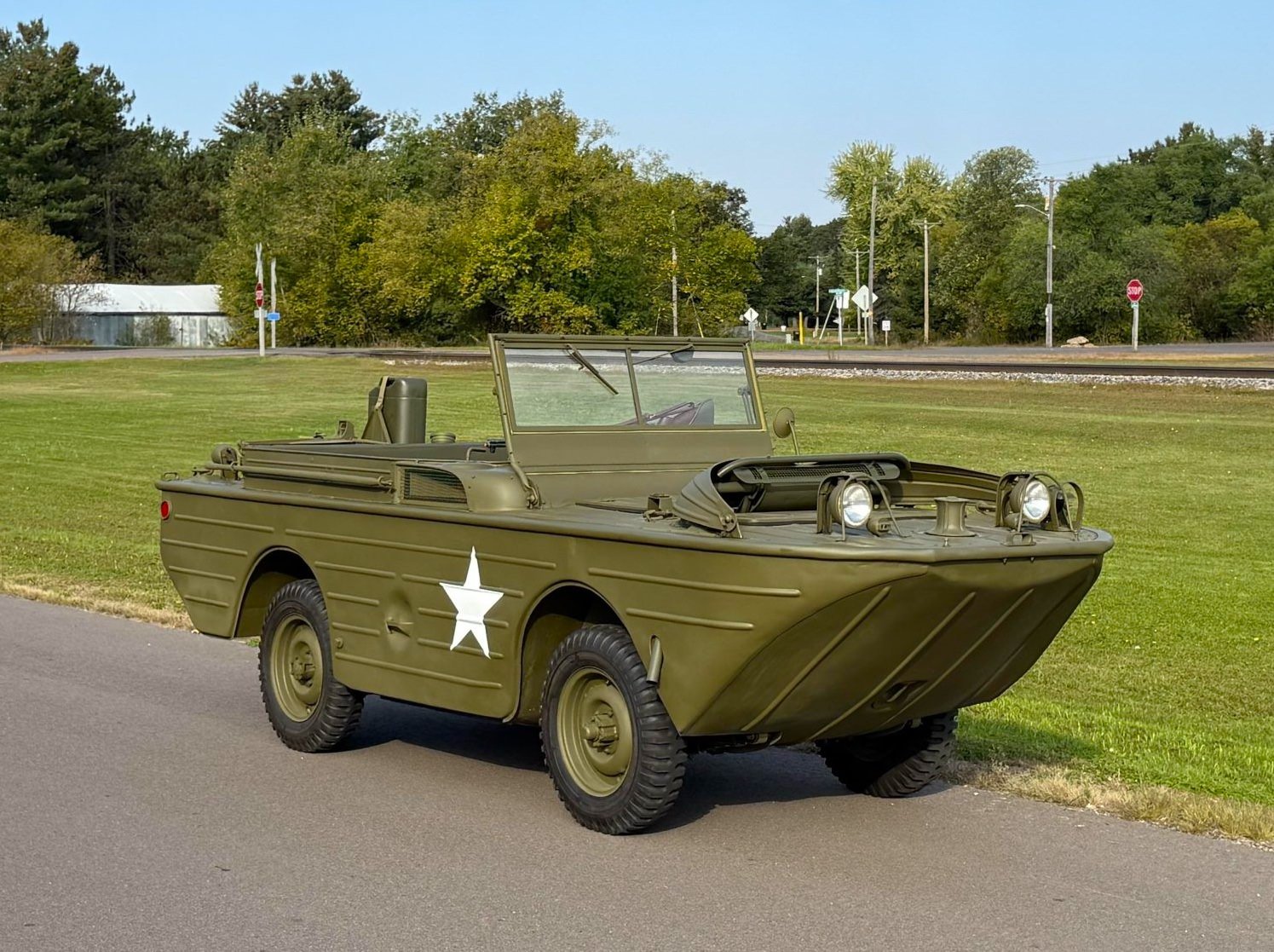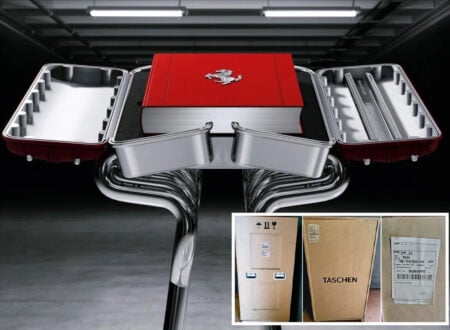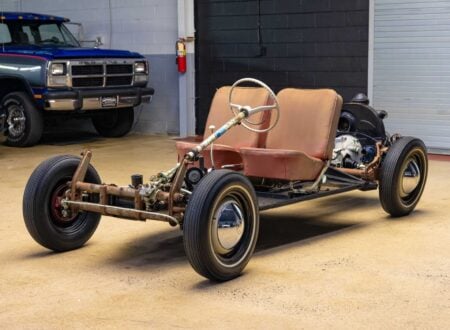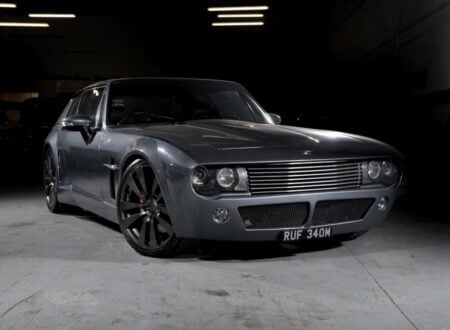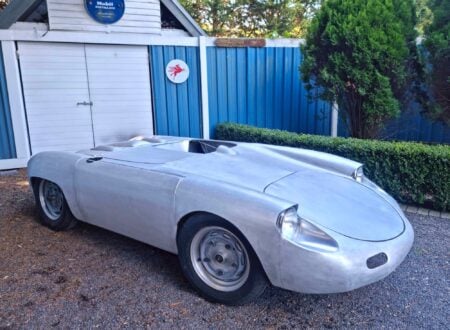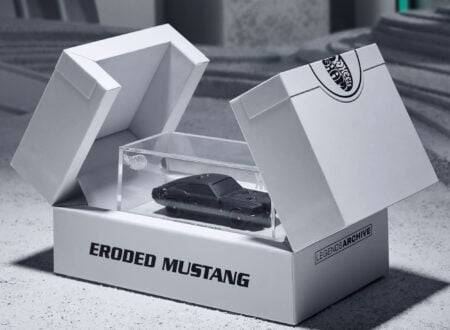This is a rare surviving Ford GPA Seep amphibious vehicle, the nickname “Seep” was chosen as it’s essentially a “Sea Jeep,” designed for use both on the water and on the land.
Between 1942 and 1943 over 12,000 examples of the Seep were built and they saw use in every major theater of war including the Pacific, Eastern Front, and during D-Day operations in Europe. Very few have survived to the modern day, and the one shown here has been carefully restored back to full working condition.
Fast Facts: The Ford GPA “Seep” Amphibious Vehicle
- The Ford GPA “Seep” was an amphibious adaptation of the World War II Jeep, developed by Ford between 1942 and 1943 under a National Defense Research Committee program. Its name combined “Sea” and “Jeep,” due to its dual-purpose design for both land and water use. About 12,778 units were built, with most seeing service in Europe, the Pacific, and Russia under Lend-Lease.
- Designed by Ford engineers with input from yacht designer Roderick Stephens Jr. of Sparkman & Stephens, the Seep had a welded steel hull shaped for buoyancy and stability rather than speed, powered by the 134.2 cubic inch Willys L-head four-cylinder engine producing around 60 bhp. It used a 3-speed manual gearbox, dual-range transfer case, and PTO-driven propeller for water propulsion, achieving about 40 mph on land and 6 mph in calm water.
- The vehicle’s added length and weight, 84-inch wheelbase and roughly 3,500 lbs, made it less agile than the standard Jeep and left it with low freeboard, limiting performance in surf or rough water. Field reports cited reliability in rivers and lakes but vulnerability in open seas. Despite its shortcomings, the GPA influenced later designs like the larger, more capable DUKW and the Soviet GAZ-46 MAV, which refined the concept postwar.
- The 1943 Ford GPA shown here underwent a $269,000 rotisserie restoration by L’Cars Automotive Specialties between 2021 and 2022. Finished in olive drab, it retains its steel hull, original amphibious drivetrain, capstan winch, bilge pump, blackout lighting, and 16-inch steel wheels. Inside are front bucket seats, a rear bench, a Tobe Filterette device, and a deactivated M1 Garand rifle. It’s offered for sale out of Bruce, Wisconsin, with a clean Michigan title.
History Speedrun: The Ford GPA “Seep”
When the United States entered World War II, the US Army needed a light 4×4 that was capable of amphibious operations to land on a beachhead and then keep moving inland with soldiers and supplies onboard. Ford’s answer, developed under a National Defense Research Committee program, was the Ford GPA – the “Seep,” short for “Sea Jeep.”
Above Video: This WWII-era footage shows the Ford GPA Seep being tested near Ford’s Dearborn complex in Michigan.
Celebrated yacht designer Roderick Stephens Jr., of Sparkman & Stephens, shaped the amphibious hull concept, while Ford and Marmon-Herrington pursued competing platform designs around proven GP/GPW Jeep running gear. The goal was simple in theory – take the compact Jeep package and make it float, without ruining its usefulness and 4×4 ability on land. In practice, that balance proved hard to hit.
Early 1942 Seep prototypes led to a production run from 1942 to 1943. The GPA kept the Willys/Ford 134 cubic inch (2.2 liter) L-head four banger rated at 60 bhp, driving through a 3-speed manual and dual-range transfer case. A power-take-off engaged a screw propeller for water travel, and a simple rudder managed direction changes when afloat.
The welded steel shell did double duty as bodywork and a flotation hull, with a boat-like bow, a faired prop tunnel, and a bilge pump to keep water ingress at bay. The front splash shield could be raised for wave protection when needed. Controls inside were essentially Jeep-simple with added levers for the bilge and PTO.
The dimensions of the Seep tell the story of the packaging compromises – compared with the standard MB/GPW’s 80 inch wheelbase, the GPA was stretched to 84 inches and measured in at 182 inches long. The curb weight climbed to roughly 1,600 kgs (around 3,500 lbs), a big jump over a land-only Jeep and a key reason performance suffered.
On the road, the top speed was around 40 mph, in the water roughly 6 mph was typical in calm conditions. The added mass, coupled with limited hull volume, left the vehicle with low freeboard which made it workable on rivers and lakes but marginal to downright dangerous in surf and rough conditions.
Field experience confirmed the trade-offs – GPAs could cross quiet waterways and handle reconnaissance in protected shallows, but they were easily swamped at beaches and unwieldy in tight terrain compared with a regular Jeep.
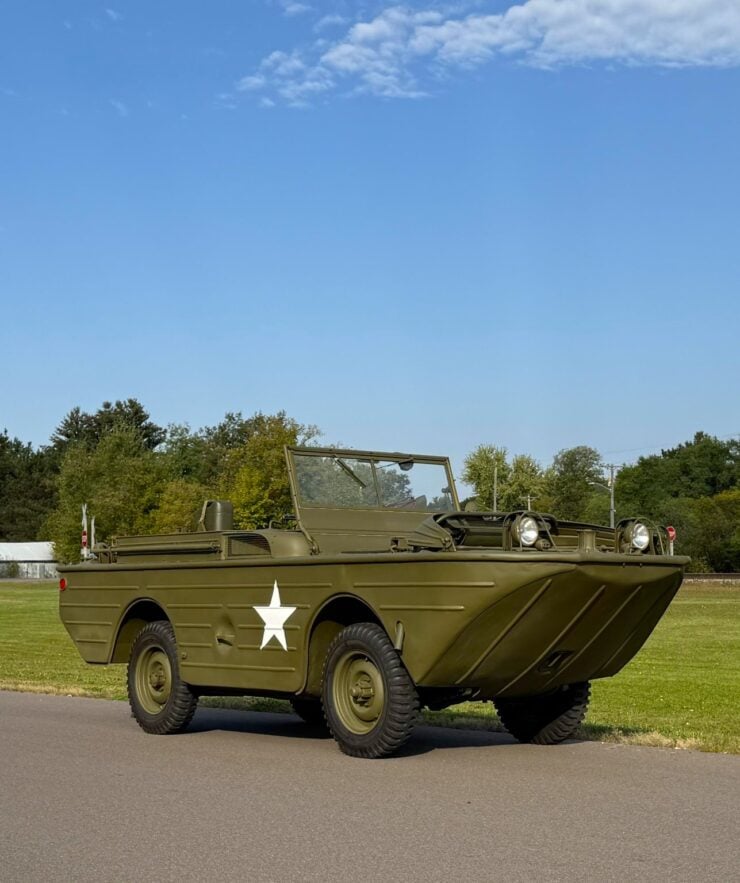

Period images show water testing near Ford’s Dearborn complex, a reminder that the engineering push was real, yet feedback from North Africa and the Mediterranean highlighted the same issues – the vehicle was simply too heavy on land and not buoyant enough at sea.
The Soviet Union received about 3,520 examples of the Seep under the Lend-Lease program, the British Commonwealth around 852, and others were distributed among Allied partners. Although the US Army never fully embraced the GPA for large-scale beach assaults, it still carved out utility where waters were calmer and crossings frequent.
The postwar story of the Seep is arguably its most interesting legacy, the Soviets refined the idea into the GAZ-46 MAV, a larger, better-floating derivative built in the 1950s on GAZ-69 underpinnings. These vehicles proved absolutely crucial in the Soviet Union as they allowed crossings of rivers, marshy wetlands, mud bogs, and almost any other kind of terrain.
From an engineering perspective, the GPA is fascinating. The amphibious elements worked as designed – the PTO prop, rudder, bilge, sealed electrics – and the hull integration was tidy given the constraints. But the small platform couldn’t carry enough volume to offset its weight gain. Freeboard was the Achilles’ heel, and it limited payload and seakeeping.
The lesson landed quickly across American amphibian programs. The bigger DUKW, developed on a larger scale and entering production in 1942, proved the better answer for surf, cargo, and troop movement, it wasn’t a successor in the family tree so much as a parallel, more capable counterpart that benefited from shared thinking and the lessons learned in testing.
Surviving GPAs now almost all sit in museums and private collections, many have been restored with the same attention that wartime engineers gave them in period. They’re conversation pieces at shows because they capture a moment in history, and many have never seen one in person.


The 1943 Ford GPA “Seep” Shown Here
This 1943 Ford GPA amphibious Seep has been in single-family ownership since 1958, and it recently underwent an extensive rotisserie restoration by L’Cars Automotive Specialties of Wisconsin between 2021 and 2022, totaling more than $269,000 USD.
It’s been refinished in olive drab, it retains its steel hull and fully-functional amphibious drivetrain. It’s powered by a 134.2 cubic inch L-head inline-four paired with a 3-speed manual transmission, a dual-range transfer case, and a power-take-off-driven propeller for water propulsion.
The hull and bodywork were fully disassembled, repaired, and repainted, while equipment including a capstan winch, folding spray shield, bilge pump, blackout lights, and pintle hitch were restored or replaced.
The folding windscreen has dual electric wipers, an anchor and jerry can are fitted, it rides on 16 inch steel wheels fitted with non-directional military tires from Specialty Tires of America, with a spare mounted at the rear.
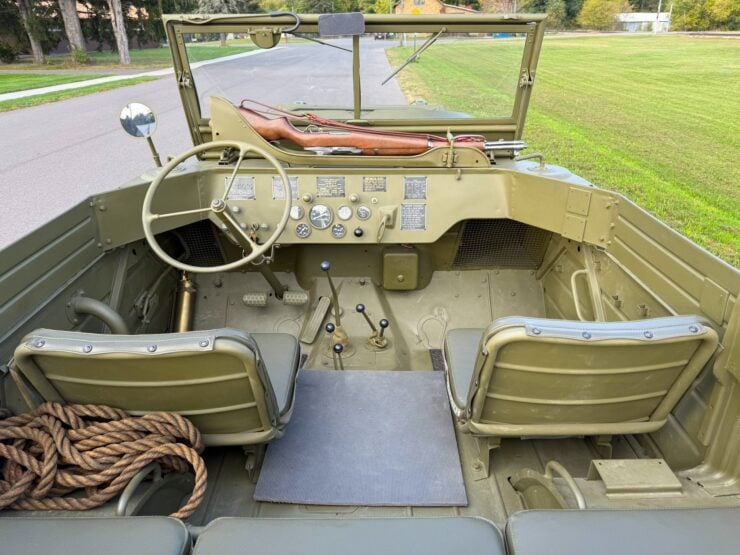

Inside, the cabin has individual front seats and a rear bench with removable olive-drab cushions. Fitted accessories include a deactivated M1 Garand rifle mounted across the dash, a Tobe Filterette radio interference suppressor beneath it, a fire extinguisher stored in the driver-side footwell, and a shovel and axe stowed behind the rear bench.
It’s now being offered for sale out of Bruce, Wisconsin on Bring a Trailer with a collection of accessories and a clean Michigan title in the owner’s name. If you’d like to read more about it or place a bid you can visit the listing here.
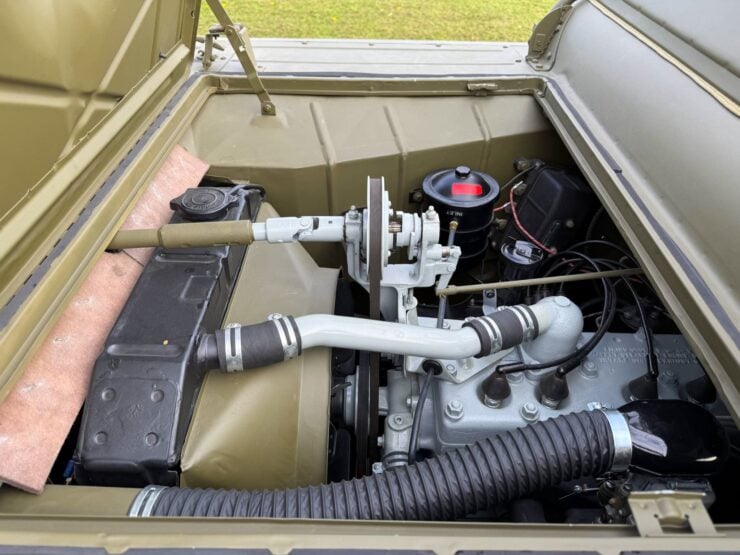
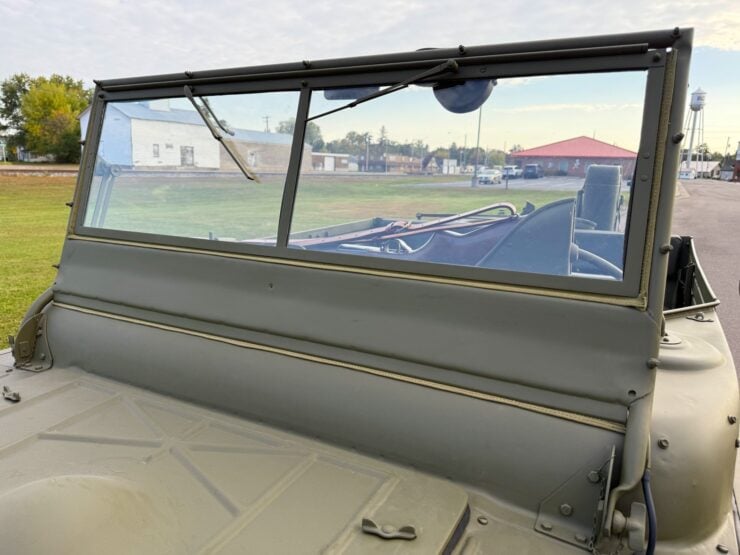

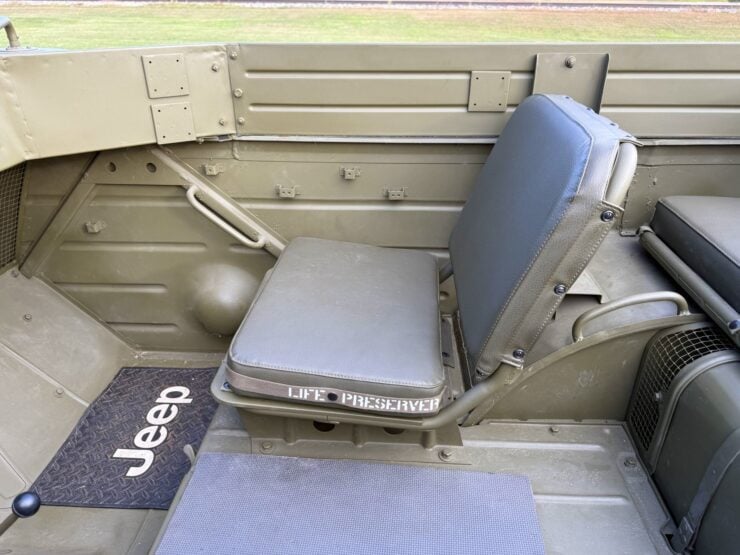


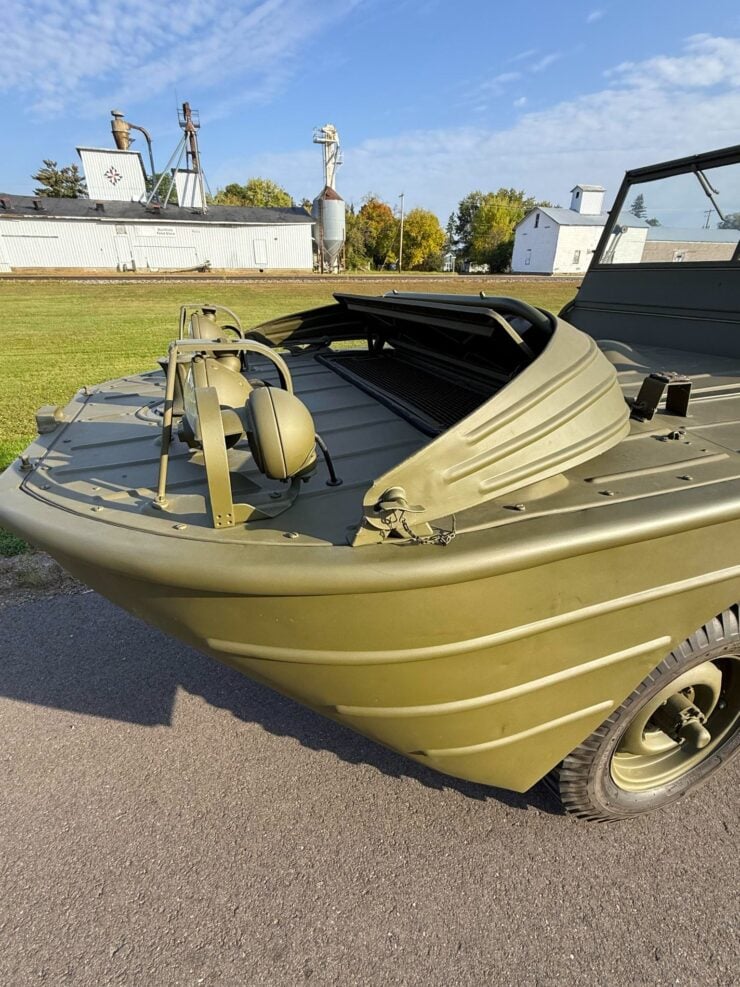
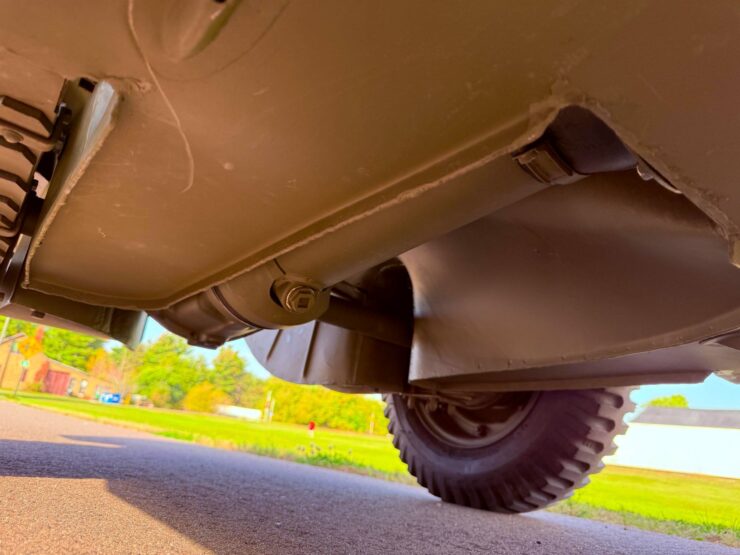
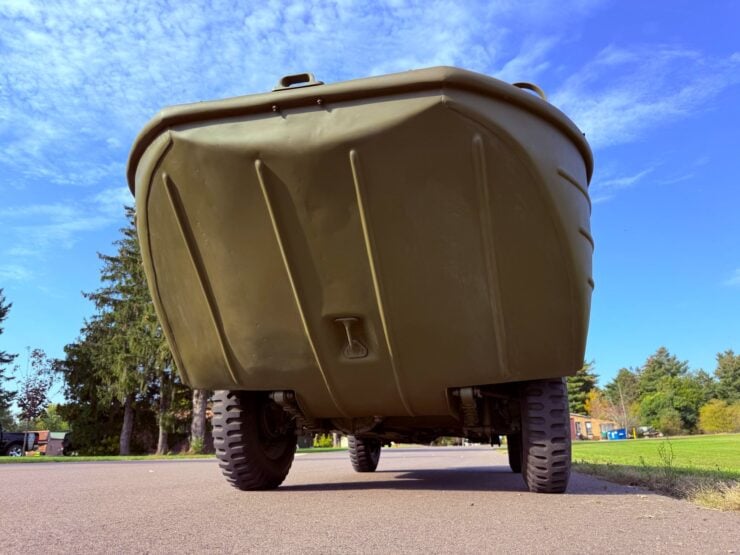
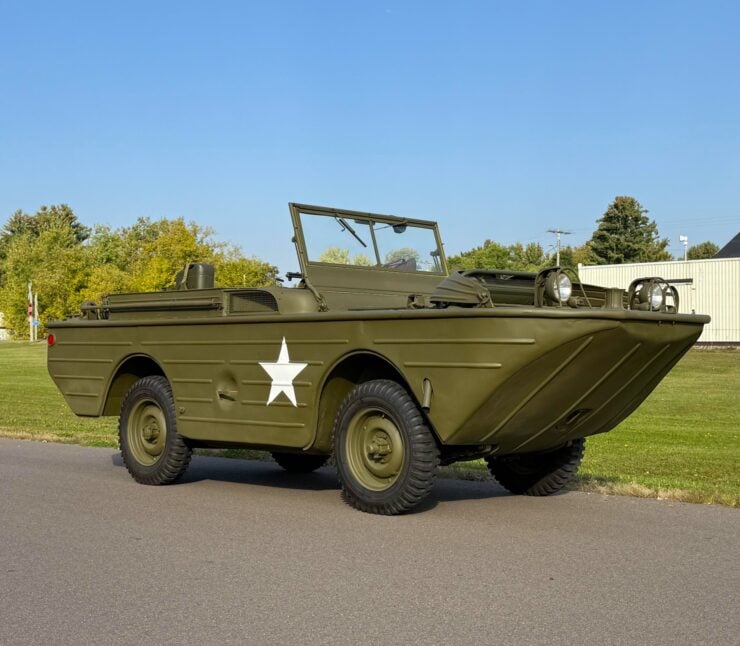
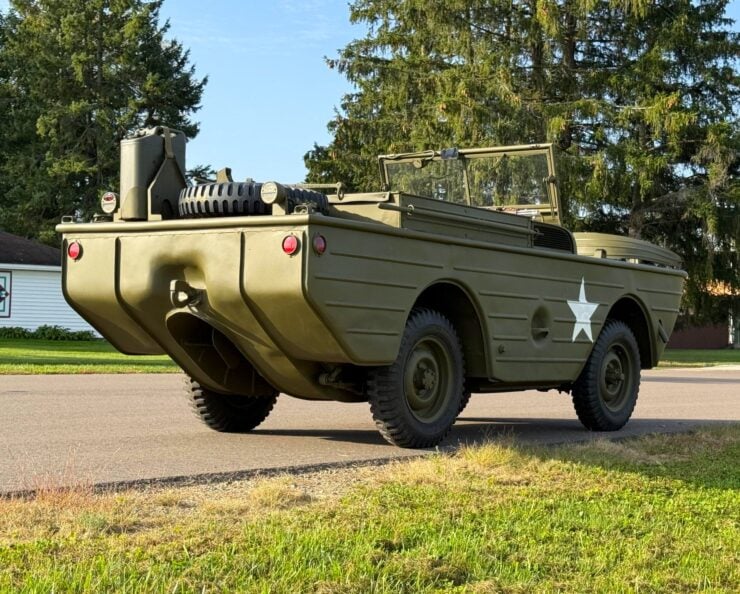
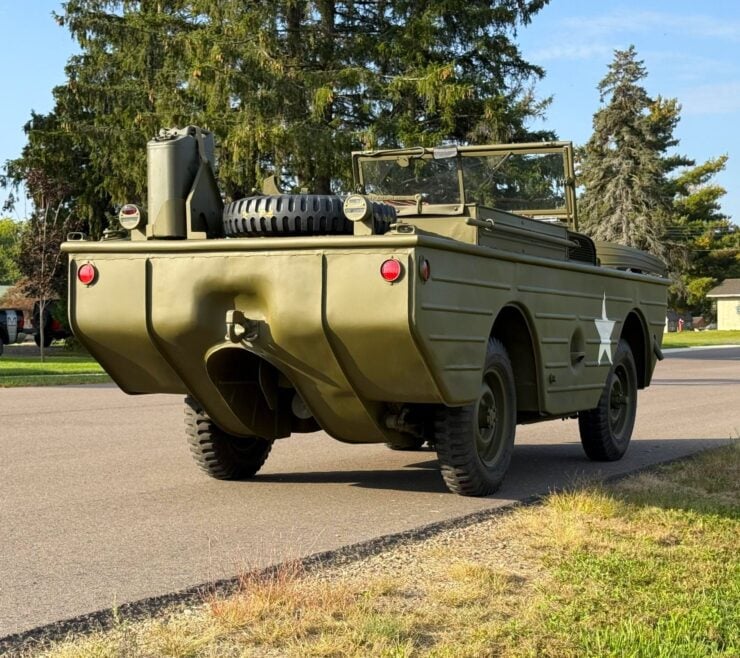

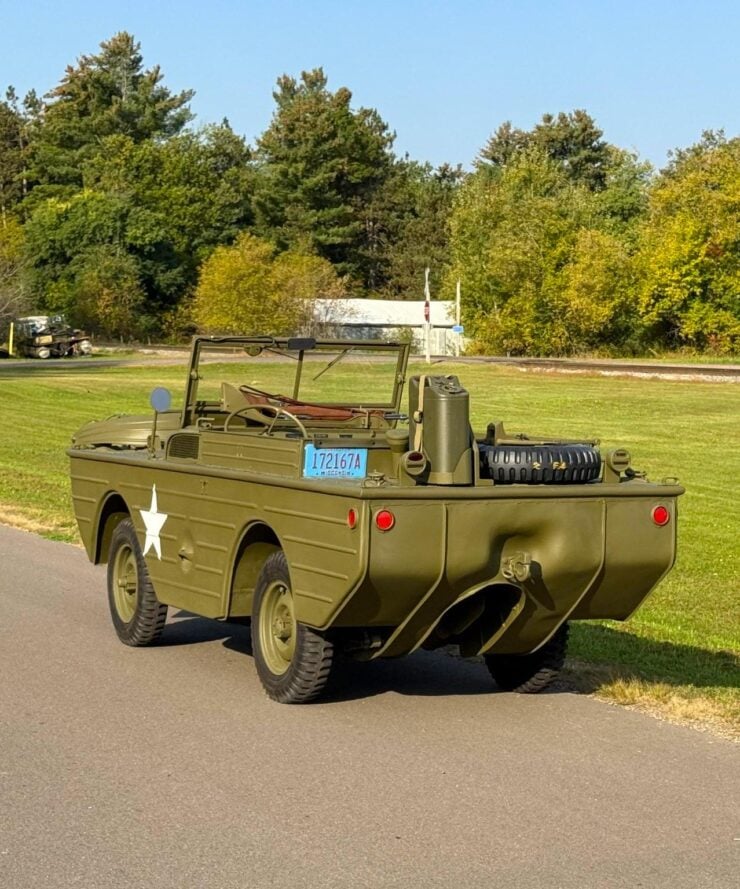
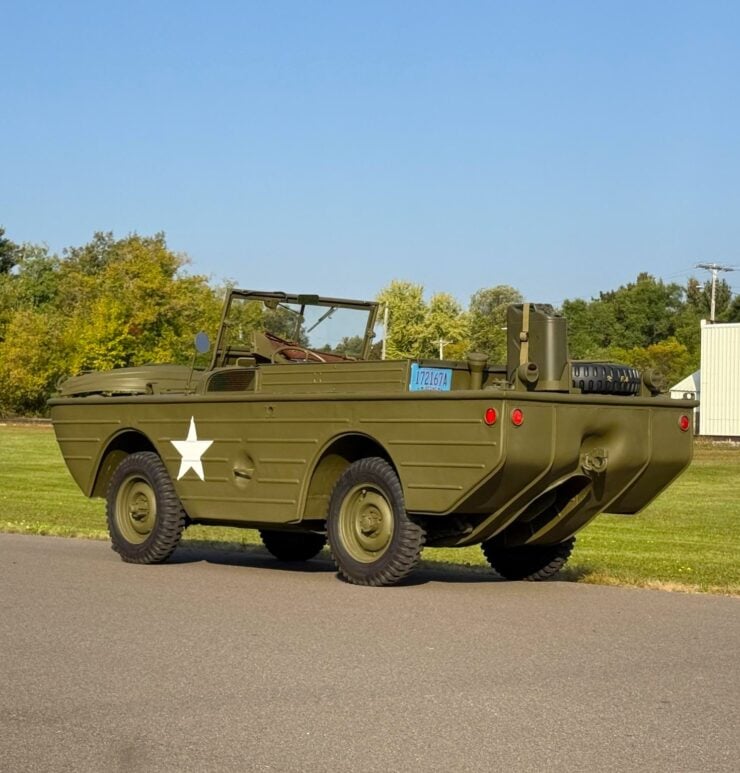
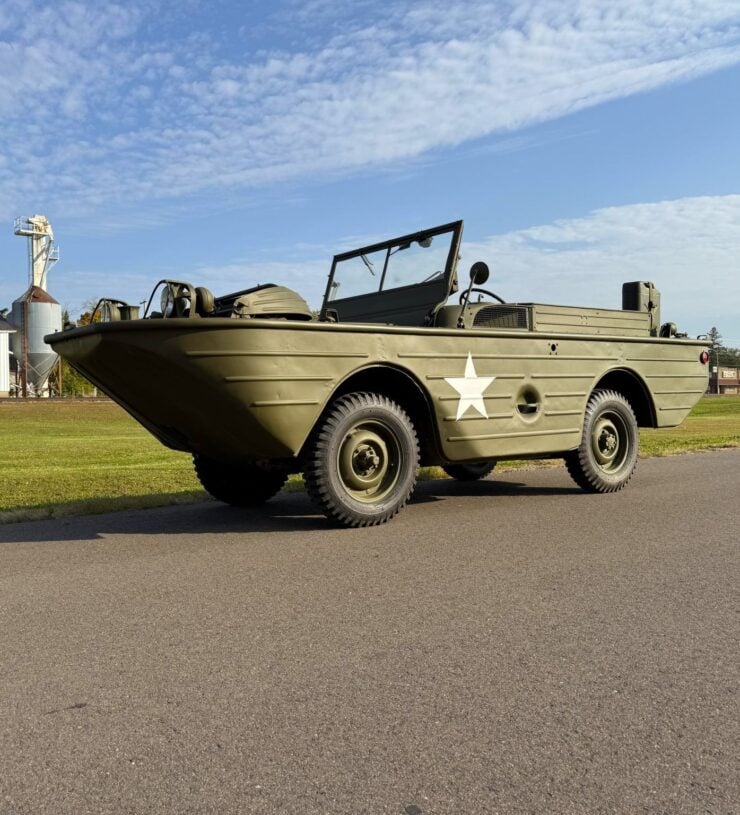
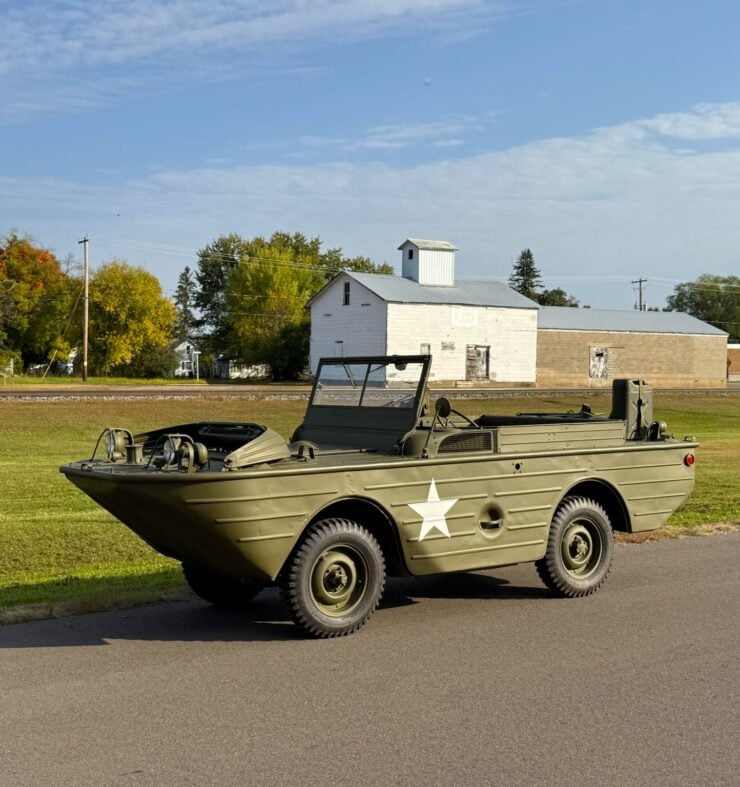

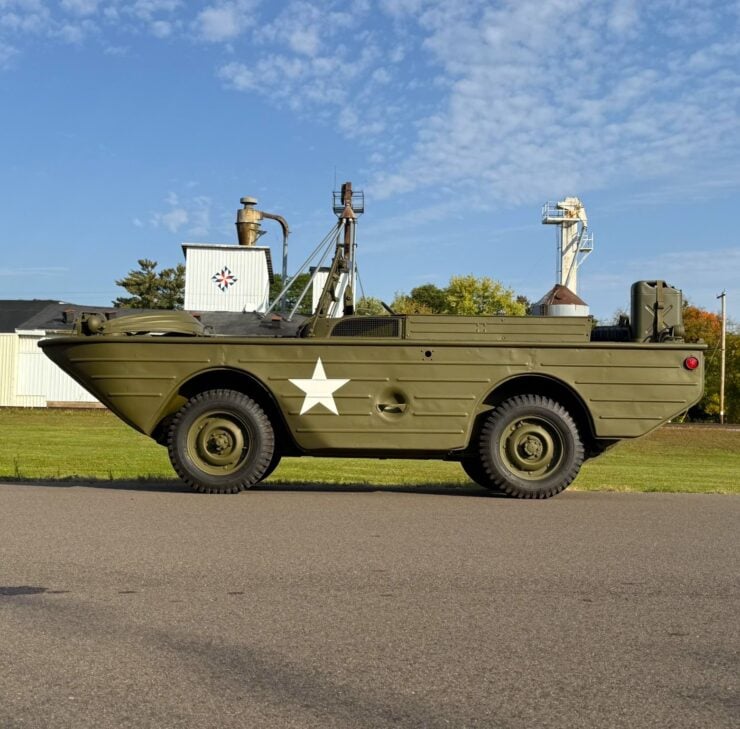
Images courtesy of Bring a Trailer

